Last year wasn’t just a strong year of film; it was also a year of such an eclectic variety of good films of all sorts. While there wasn’t a whole lot to chew on in the mainstream American film landscape, the independent and foreign scenes were thriving with great stuff, and there were still a few winners in the wide release area as well. With this variety of great films came a variety of great scenes that helped define this year in film. Some were exciting, others were simply fascinating. Some were hysterical, some made you want to roll into a ball and weep. It’s hard to pick from such a wide range of memorable moments throughout this year of cinema, but forcing myself to only pick one from each film should help with things. Here are twenty scenes, one from each film, that left their mark on this particular viewer, and, indeed, audiences worldwide. As you should probably expect from a list like this, there will be spoilers.
20.) Anchorman 2: The Legend Continues – News Team Assemble
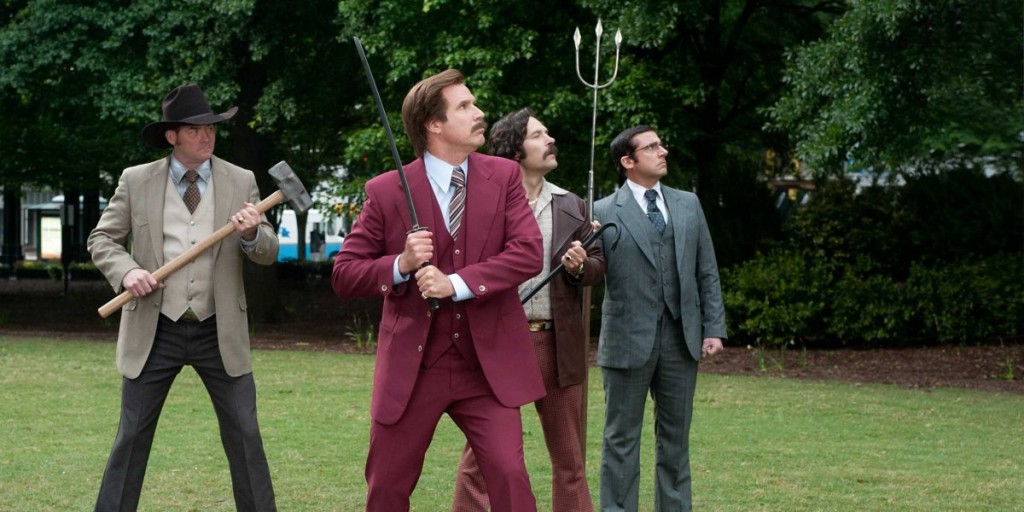 Anchorman 2 is a mixed bag of a comedy sequel, but for every moment of dead air, there are at least two or three with great laughs that are up to par with the first film. As one would expect from an Anchorman film, the comedy is at its best when Adam McKay and crew fully embrace pure stupidity, and this is most evident when the first film’s infamous “News Team Brawl” returns. Rife with even more ludicrous details, carnage, explosions, and, of course, hilarious cameos I dare not give away, it’s a sequence that ultimately redeems the existence of this long-anticipated sequel.
Anchorman 2 is a mixed bag of a comedy sequel, but for every moment of dead air, there are at least two or three with great laughs that are up to par with the first film. As one would expect from an Anchorman film, the comedy is at its best when Adam McKay and crew fully embrace pure stupidity, and this is most evident when the first film’s infamous “News Team Brawl” returns. Rife with even more ludicrous details, carnage, explosions, and, of course, hilarious cameos I dare not give away, it’s a sequence that ultimately redeems the existence of this long-anticipated sequel.
19.) Frozen – For the First Time in Forever
I’m probably gonna catch hell for picking this scene over Idina Menzel’s showstopping rendition of “Let It Go”, but I couldn’t help but get swept up in this very classic-feeling Disney tune, managing to both effectively wring out my nostalgia for the animated classics and also deliver something catchy and joyful all on its own. You wouldn’t expect a song with the lyric “Who knew we owned a thousand salad plates?!” to be this good, but with Kristen Bell’s enthusiastic vocal delivery, the vibrant animation, and some excellent songwriting from The Book of Mormon‘s Robert Lopez and his wife Kristin-Anderson Lopez, it’s hard not to get swept up in heroine Anna’s breaking out from the constraints of her confined, limited worldview. In a film full of excellent songs (arguably not enough) that each could’ve been in this list, this was where things peaked. At least for me. Go a little easy on the comments, guys.
18.) Leviathan – Deadliest Catch
A stark contrast from our previous film, this hypnotic, sublimely experimental documentary has a plethora of astounding moments, as cameras attached all around the film’s central fishing vessel manage to capture seemingly uneventful moments and turn them into scenes of such unnerving beauty, wonder, and even terror. And yet, more than those harrowing moments of angelic seagulls circling around the boat, or severed fish heads floating back and forth in a bloody metal bowl, the most memorable scene happened to take place in the boat’s interior, with very little activity on screen. We watch with unblinking attention as one of the fisherman, as dead and silent as the others on board, takes a lunch break in the boat’s dining room. He’s watching something on a television set that’s off-screen, but just by listening to the dialogue, we can tell that he’s watching Deadliest Catch or some other kind of reality show about fishing. Having seen the reality of these fisherman’s lives, hearing the show’s narrator spout lines like “Honor, sacrifice, brotherhood, on the next Deadliest Catch!” gives his life a cruel irony, which, as we’ve witnessed, isn’t filled with that sort of adventure, but instead, a horrifying mundanity. It’s a scene unlike anything else I’ve ever seen, documentary or otherwise, which will most certainly be a theme throughout this list.
17.) The World’s End – WTF
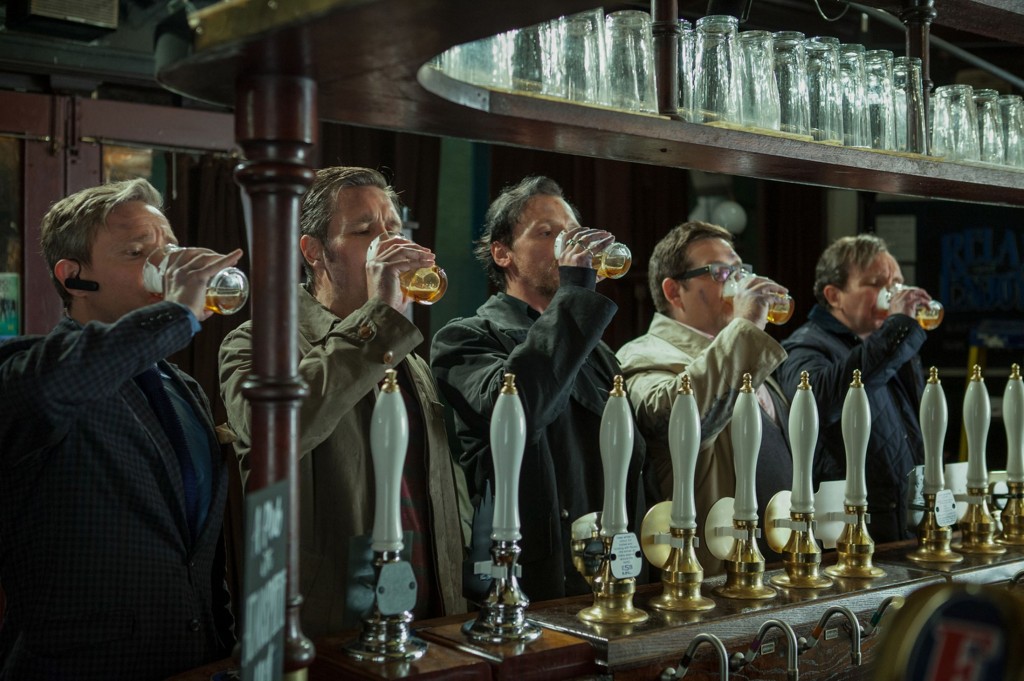 Edgar Wright is a visual genius, and the editing and camerawork in his latest feature The World’s End has him in peak form. Wright is at the most precise he’s ever been, and nowhere is that precision and expert timing more evident than when Gary King and the rest of the Five Musketeers (weren’t there three?) have their first encounter with the “Blanks”, body-snatcher-like robot clones of the residents of their homtown Newton Haven, resulting in a bathroom brawl that manages to deliver one of the best pure action scenes of the film. Wonderful choreography aside, the effects work for the dismembering and dismantling of the Blanks is insanely satisfying without being gruesome, the editing and camerawork is smoother, cleaner, and more coherent than most of this generation’s modern Hollywood action films, and the slapstick lands as perfectly as the fight’s many punches. Both times I saw the film in theaters (one being a packed midnight showing), the audience cheered by the time the sequence concluded, myself included.
Edgar Wright is a visual genius, and the editing and camerawork in his latest feature The World’s End has him in peak form. Wright is at the most precise he’s ever been, and nowhere is that precision and expert timing more evident than when Gary King and the rest of the Five Musketeers (weren’t there three?) have their first encounter with the “Blanks”, body-snatcher-like robot clones of the residents of their homtown Newton Haven, resulting in a bathroom brawl that manages to deliver one of the best pure action scenes of the film. Wonderful choreography aside, the effects work for the dismembering and dismantling of the Blanks is insanely satisfying without being gruesome, the editing and camerawork is smoother, cleaner, and more coherent than most of this generation’s modern Hollywood action films, and the slapstick lands as perfectly as the fight’s many punches. Both times I saw the film in theaters (one being a packed midnight showing), the audience cheered by the time the sequence concluded, myself included.
16.) The Grandmaster – The Train Fight
And speaking of great fight scenes, just about every single one of the kung-fu scenes in Wong Kar-Wai’s epic could be included in this list, but there’s no denying that there’s a special kind of visceral power to the train fight scene between Gong Er (Ziyi Zhang) and Ma San (Jin Zhang). There aren’t many words to describe this visual feast of masterful cinematography, editing, and fight choreography, but the emotional center that comes with Ziyi Zhang’s performance gives the proceedings much needed weight. It’s a beautiful, thrilling, awe-inspiring moment in a film that has plenty of them to spare.
15.) Captain Phillips – Do You Copy?
Ladies and gentlemen: this is acting. Tom Hanks goes through the majority of Captain Phillips with a subdued, nuanced steadfastness, making for one of the more subtly interesting performances of his career. It isn’t until the end of the film, however, that Hanks lets his acting talents blow up, deservedly so. After having to go through hell and literal high water dealing with a hostage situation involving Somali pirates, the US Marines finally off the guys keeping Hanks’s titular captain prisoner in a drifting lifeboat. As soon as that happens, Phillips’s facade of calm, headstrong resolve in the face of danger completely falls apart in a stunning, emotional moment of catharsis. Hanks perfectly conveys the human center of not just Captain Phillips, but that of many of the hostages and even the pirates as well: sometimes, the only thing that can actually guide us is pure fear.
14.) Gravity – Brief Respite
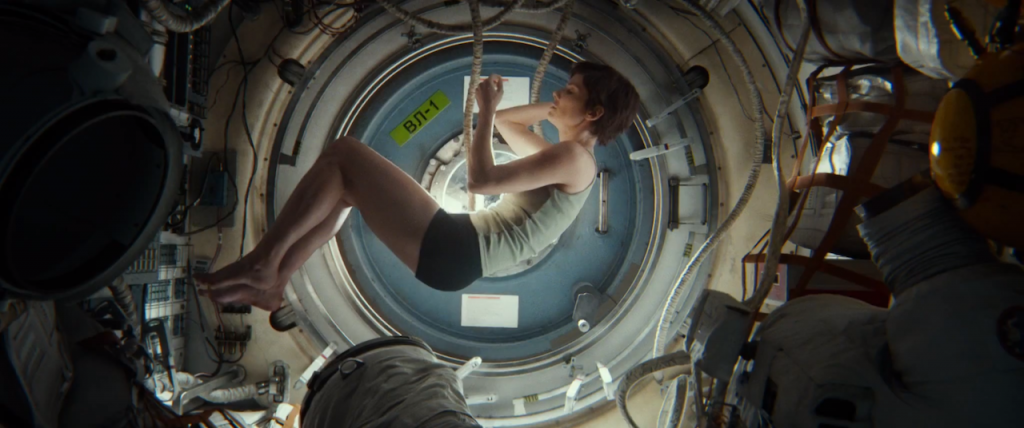 For all of Gravity‘s unbearably intense action scenes, the scene that stayed with me the most in Alfonso Cuarón’s sensory extravaganza was a relatively simple image, where astronaut Ryan Stone (Sandra Bullock) is finally able to have a moment of rest after an intense flirtation with death, and so does the audience. As she slowly allows oxygen into the space station, she individually removes each piece of her suit as if she were shedding off a layer of old skin, and then floats in a fetal position, the oxygen tube on her suit positioned in a manner that looks an awful lot like an umbilical cord. We know that more dangers await her, but for now, she’s survived an ordeal, and if she wants to survive the next few, she’ll have to shed her old, cowardly self, and begin anew. It’s a striking moment of visual poetry that serves not just as a much-needed breather for the non-stop tensity but as a perfect summation of the film’s themes and as a simply beautiful, ethereal moment all on its own.
For all of Gravity‘s unbearably intense action scenes, the scene that stayed with me the most in Alfonso Cuarón’s sensory extravaganza was a relatively simple image, where astronaut Ryan Stone (Sandra Bullock) is finally able to have a moment of rest after an intense flirtation with death, and so does the audience. As she slowly allows oxygen into the space station, she individually removes each piece of her suit as if she were shedding off a layer of old skin, and then floats in a fetal position, the oxygen tube on her suit positioned in a manner that looks an awful lot like an umbilical cord. We know that more dangers await her, but for now, she’s survived an ordeal, and if she wants to survive the next few, she’ll have to shed her old, cowardly self, and begin anew. It’s a striking moment of visual poetry that serves not just as a much-needed breather for the non-stop tensity but as a perfect summation of the film’s themes and as a simply beautiful, ethereal moment all on its own.
13.) The Spectacular Now – Reunion
Over the course of The Spectacular Now, one of the many shadows cast over Miles Teller’s central teen party animal Sutter is the absence of his father. As he’s nearing graduation and beginning a very serious relationship with Shailene Woodley, Sutter convinces his older sister (a brief yet nuanced performance from Mary Elizabeth Winstead) to give him his father’s phone number, resulting in a reunion at a local bar that at first alleviates Sutter’s anxiety, only to grow more uncomfortable as tensions bubble underneath the surface and Sutter gains new perspectives of both his dad and even himself. There’s nothing too showy or bombastic about this sequence, allowing the pressure between the two to be communicated through small gestures and facial expressions that communicate years of untold grief. Best of all is the film’s beautiful empathy, not outright depicting Sutter’s father (played excellently by Kyle Chandler) as a bad person. There’s so much complexity in this small scene, and almost all of it is unsaid. It’s a masterclass of acting, tone, and visual language culminating in one of the most subtly emotional and complex scenes of the year.
12.) Pacific Rim – Hong Kong Brawl
You want an action sequence? Here’s a god damn action sequence! Guillermo Del Toro pulls out all stops in his mecha-versus-kaiju monster mash for the film’s longest and best action sequence. Beginning in the ocean and ending in space(!), Del Toro whips out every tool in his arsenal as a filmmaker. The sense of scale is more palpable than any other monster film of its ilk, the special effects are colorful and detailed, fight after fight is delivered with all sorts of flat-out awesome touches (“No! There’s still something left!”), and concludes with a very well-deserved use of slo-mo. You can argue I’m being blinded by nostalgia, but the film effortlessly conjured up childlike glee as scenes from childhood favorites of mine like Power Rangers and Gundam were brought to life in a magnificent spectacle, and not a single action scene this year managed to top this sequence on that regard.
11.) Inside Llewyn Davis – An Encounter on the Road
It’s hard to pick just one scene from the Coen Brothers’ latest masterpiece for this list. I could’ve easily picked any of the film’s musical interludes, including the ridiculously catchy “Please Mr. Kennedy” that featured Adam Driver’s magnificent delivery of “Outer. SPACE!”, or Oscar Isaac’s soulful rendition of “The Death of Queen Jane” that leads to a crushing rejection. But there was one scene that just stuck with me as I kept running Inside Llewyn Davis through my head (which I did a lot of), and it was a moment that completely embodied the Coens’ vision of sublime melancholy. Llewyn, after facing aforementioned rejection at Chicago, drives back to Greenwich Village. The road is icy, the night is pitch black, and the gently raining snow looks way more oppressive when driving at top speeds. Almost dozing off after a physically and emotionally exhausting trip, Llewyn is shaken back to life when an animal pounces in front of the car. Llewyn stops. What did he hit? We don’t even know for sure. He gets out of the car to take a look. The night is gorgeously lit by DP Bruno Delbonnel, with snow falling gently on the road like the ashes that are Llewyn’s musical career. Llewyn spots the animal. It’s still too dark and far away for Llewyn and the audience to make out what it is. There is no dialogue between the two creatures, and the beast walks off to the forest. What the hell even happened? Could that animal be the cat Llewyn’s been searching for throughout the film? And why does Llewyn–and I, for that matter–feel so empathetic and sad for this creature? I can’t even say for sure, and that’s why it’s remained imprinted in my brain for months. Like a great folk song lyric, you may not fully understand it, but the second you hear it being sung by the Coens’ downtrodden tones, you instantly feel the despair.
10.) The Wolf of Wall Street – The Cerebral Palsy Phase
Quaaludes are the fuel that runs the blood of the many stockbrokers in Scorsese’s three-hour epic of capitalism and debauchery, including Leonardo DiCaprio’s Jordan Belfort and Jonah Hill’s Donnie Azoff. Possibly under the surveillance of the FBI, Jordan and Donnie decide to blow off some steam by consuming some presumably powerful ‘ludes only to find their effects less than satisfying. They take some more, Jordan gets an urgent phone call, drives to the country club, learns his phones have been tapped, and then, luckiest of all luck, the ‘ludes hit like horse tranquilizer at the most inconvenient moment, leaving Jordan without control of his legs and drooling all over the country club floor. The most manic scene in an already manic film, DiCaprio shows a knack for physical comedy he’s never fully displayed, and the hilarity continues with a drug-induced drive back home and a darkly hysterical cat fight between Jordan and Donnie for the phone, which leads to quite possibly the strangest and funniest use of Popeye I have ever seen. It’s a scene that must be seen to be believed.
9.) Before Midnight – “Because of the way you sing.”
For the first time in nearly two decades, Jesse and Celine reach their nadir. We finally bear witness as the couple we’ve all fallen in love in over the course of Linklater’s ongoing series, as played by Ethan Hawke and Julie Delpy, are thrown into a vicious verbal fight in a Greek couples’ resort room, where they lay all of their pent up aggression up on the table over the course of half an hour. It’s a long, emotionally brutal scene; damn near hard to watch for viewers who have been invested in their history throughout the trilogy, but I can’t think of a more masterfully executed scene of pure dialogue this year. The writing works incredibly on its own, so truthfully observed it’s downright unbearable at certain moments, but it also proves Linklater’s structural, nine-year experiment successful. With the history of the previous two films already established, this verbal dispute feels like so much more. There’s more stakes in this one scene than Pacific Rim, the Transformers trilogy, every film from the Marvel cinematic universe, and Independence Day combined, and that can only be attributed to how insanely, almost meticulously well-drawn and established these characters are, and the brilliant performances and writing from Hawke and Delpy. All I can really say is, I hope that the fourth installment, Before Brunch, doesn’t hit this hard of a punch.
8.) Short Term 12 – The Octopus Story
The most emotionally honest scene in a film that’s made up entirely of emotionally honest scenes. We know for a fact that there’s something troubling Kaitlyn Dever as the withdrawn teen Jayden, who’s new to the foster care facility where Brie Larson’s Grace works at. But Jayden lets her feelings spill out in an unexpected way. She reads Grace a story she wrote herself about an octopus who’s taken all sorts of abuse. I’m gonna be as honest as Destin Cretton’s sophomore film when I say that this scene utterly wrecked me in the theater. Continuing from Before Midnight our theme of uncomfortably well-observed scenes, even if you had no idea that Cretton had worked in a facility similar to Short Term 12 and based his screenplay on real experiences, you would tell right away that he knows the hardships of letting out your most buried traumas and taking care of those mental and emotional scars as well as one possibly could. Larson’s unspoken reaction is high-caliber acting, but it’s Dever who manages to steal the spotlight from her, announcing a new talent I’d love to see more of in the cinema. More importantly, Cretton manages to distill a moment that’s incredibly hard to capture without veering into pure melodrama, and the result is one of the most moving moments I’ve seen in the theater this year.
7.) Her – Fun With Surrogates
Theodore and Samantha’s relationship is as far from physical as you can possibly get. One, as played by Joaquin Phoenix, is a lonely man with a broken heart. The other, as played by Scarlett Johansson, is an artificial intelligence without a physical form. As you may expect from such a pairing, there are desires that can never be fulfilled, no matter how hard they could try. But try, they definitely do, when Samantha experiments with a physical, human surrogate who will act out the desires and advancements she simply can not accomplish. This leads to a very tricky scene as writer/director Spike Jonze is forced to juggle all sorts of tones and ideas in a single scene without so much as one stumble, so it’s hard to believe that he actually aces it in every regard. The uncomfortable awkwardness doesn’t go overboard, the actors are deadly sincere the entire way through, and while there is some humor in the ideas being presented, Jonze wisely doesn’t play it for comedy, instead deepening his exploration of the lengths human (and non-human) relationships will go to connect. Like the whole film itself, this scene is an absolute miracle or balance, intelligence, and deftly observed humanity.
6.) 12 Years a Slave – Lynching and Whipping
The only tie I’m willing to allow in this list, mostly because both scenes are epitomizations of Steve McQueen’s unflinching direction of the brutality of American slavery. Firstly is when free man-turned-slave Solomon Northup (Chiwetel Ejiofor) is punished for inflicting harm on one of his owners, resulting in an attempted lynching. Only able to touch the ground on his tippy-toes, Solomon struggles for dear life as he performs a hapless dance for survival. McQueen shoots the scene with only a few shots, one of them a very long take as we see observers in the background, white and black alike, not even giving him so much as a glance of sympathy or attention. It pretty much says all that needs to be said about slavery: how in the hell did we not do something about this sooner? Of course, I can’t leave out another (in)famous scene in the film, in which the slave Patsy (a heartbreaking Lupita Nyong’o) is whipped bare by Michael Fassbender’s plantation owner Epps and even a reluctant, forced upon Solomon, at one point. To call these scenes gut wrenching is an understatement. These are scenes of pure despair, and McQueen pulls no punches.
5.) Wolf Children – A Day of Snow
I’ve already written at length why more people need to seek out Mamoru Hosada’s gorgeous animated family film about a single mother forced to raise a duo of young werewolves, but I’ll continue pimping it out for as long as it takes. If you want to feel instantly happy, look no further than the scene in which the children have their first experience with snow. There’s literally nothing else to this scene. It’s just the family playing and running around in the snow, but through Mamoru Hosada’s breathtaking animation and a rapturous score by Masakatsu Takagi, it was one of the most joyous things I’ve seen in the cinema in a long time. That’s really the only thing I can say about this scene: it is pure, unfiltered joy.
4.) Spring Breakers – This is the American Dream, y’all
Of all the scenes listed here, this is the one that I know for a fact is going to live forever. There’s a reason why James Franco’s monologue listing all the objects in his abode that fulfill his American Dream has become the most quoted thing this year of cinema. Not only is it seriously funny and brilliantly delivered by Franco, but it encapsulates exactly the appeal and the vapidness of the MTV lifestyle that director Harmony Korine both languishes in and harshly criticizes. When historians look back at the America of the 21st century, they will find a country that was built under the principles of dark tanning oil, shorts of every color, and Al Pacino in Scarface (on repeat, y’all!). This is the America that our Founding Father fought for. An American where we now have the freedom to bask in the lyrics of Britney Spears, twirl our shotguns in the air, and proudly display our nunchucks. This is the American Dream, y’all. Now look at it. Look at that shit!
3.) Stoker – Duet
Chan-Wook Park knows what’s up. His English-language debut may not be in my Top 10 of the year (though it’s a strong honorable mention), but it does contain one of the most gripping and exhilarating scenes of the year. While we’ve felt the incestuous tension between India Stoker (Mia Wasikowska) and creepy Uncle Charlie (Matthew Goode) for some time now, their desires flourish in an unbelievable sequence of the two performing an unexpected piano duet together. This scene is pure cinema. Aurally, visually, sensually, Park wildly spins his camera around the piano, closing up on the pair’s overlapping fingers, relishing in India’s moans of desire, and utilizing Phillip Glass’s musical contributions to their fullest. This isn’t the most intellectually stimulating scene of the year, nor is it the most beautiful or disturbing. It does, however, encompass what I find so great about the movies: to fully envelop yourself in something passionate and raw. And when the song stops and we see both Wasikowska and Goode’s different yet similarly vacant faces upon the duet’s aftermath, we’re yanked back to reality and realize that we’ve just taken part in something only the movies can accomplish.
2.) The Wind Rises – The End
Jiro Horikoshi has finished his masterpiece, as Hayao Miyazaki has directing his final feature. What do they have to show for it? For Horikoshi, it is the deaths of millions of people, the loss of a loved one, and the killing of a dream. For Miyazaki, it is his most enduring statement of the fragility of innocence–the first and likely only film of his in which that innocence dies–, the sacrifices that come with creativity, and undying love in the face of a despair so absolute that even the former can’t salvage the ruins of artistic compromise, war, and mass murder. What is left? There’s always the wind–which is rising and will continue to rise–and the legacy of one of the greatest voices in cinema and animation, as The Wind Rises ends on the most perfect, fitting, and emotionally overwhelming note for a career that will stand the test of time. It’s been a good run, sensei. Now we must strive to live.
1.) The Act of Killing – “But I can feel it, Josh. Really, I feel it.”
To watch the final moments of The Act of Killing is to witness something the cinema has never, ever captured until now: the true, honest-to-god regret of a man so evil, you’re deeply surprised that he even has any humanity left. And yet, here we are, with Anwar Congo, one of the primary leaders behind an entire genocide, feeling “it”, whatever it is, all on documentary film. Watching this scene feels less like a confessional and more like an exorcism; a purging of evil. I’ve heard many say that Joshua Oppenheimer’s documentary is too uncomfortable to watch again, and I understand their sentiments, as it is one of the most morally harrowing films I’ve ever seen. But I think what makes The Act of Killing such a remarkable achievement, and a film that I think everyone deserves to see at some point in their lives, is that there is a silver lining in this tale of pure evil; a small silver lining, but in the face of, again, pure evil, such small light can brighten the darkness, and is all that’s really needed. That a man like Congo can feel this remorse is a feat for human kindness, even if it, unfortunately, can’t bring back all the lives he’s taken. It ultimately doesn’t matter that this remorse was brought about through the power of cinema, which proves to be a powerful tool of human empathy. What truly matters is that empathy still exists in the worst of people and the worst of sins, even if cinema is what it takes. This is the single most disturbing, emotional, and somehow beautiful scene of 2013, and it is, like many of the picks here, like nothing else we’ve ever seen.

















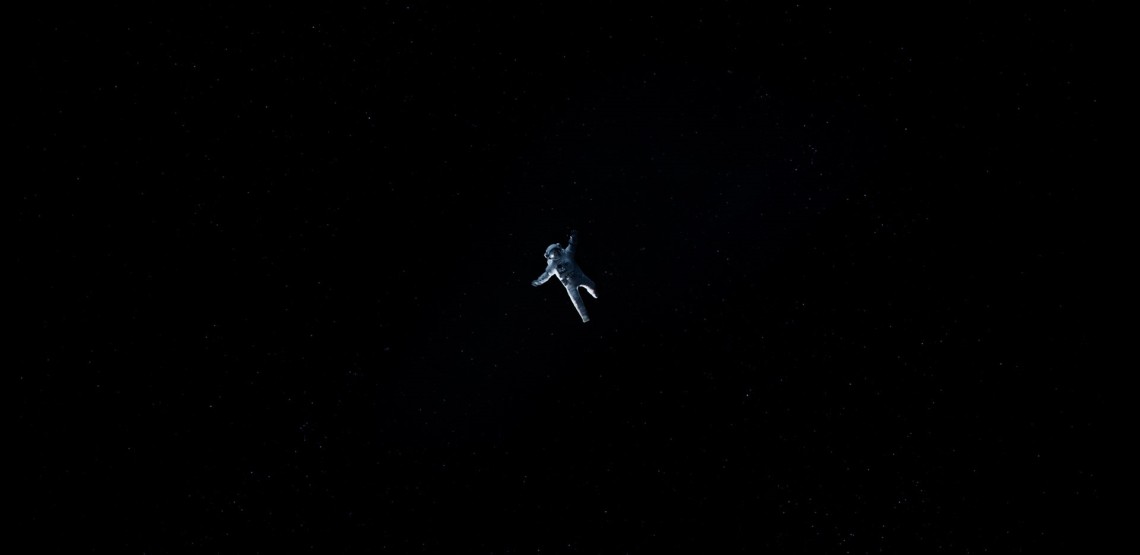
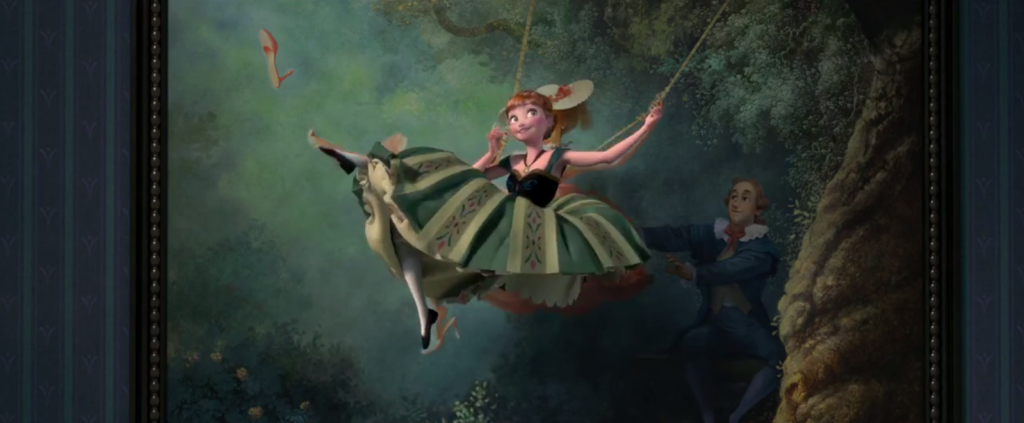
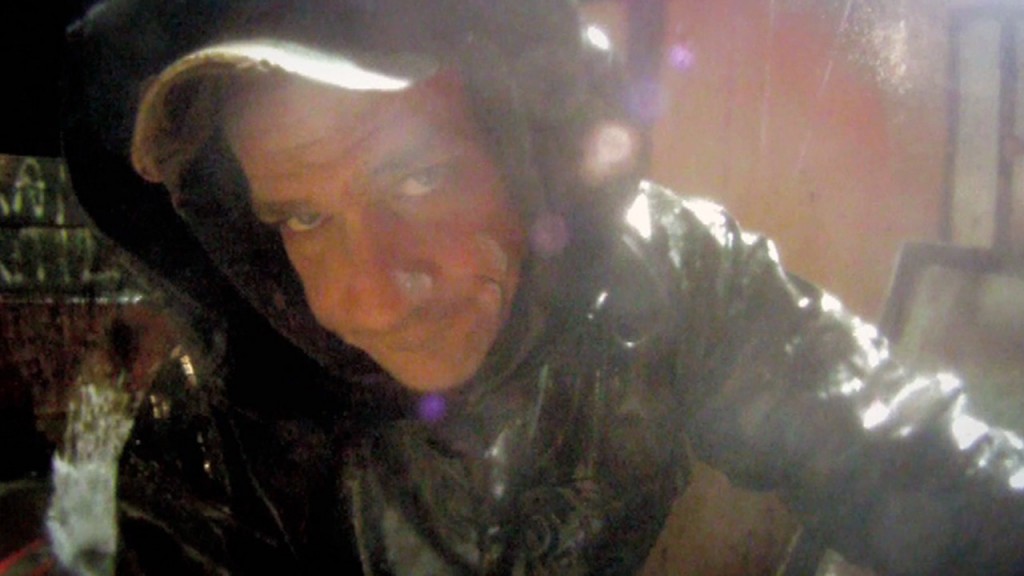
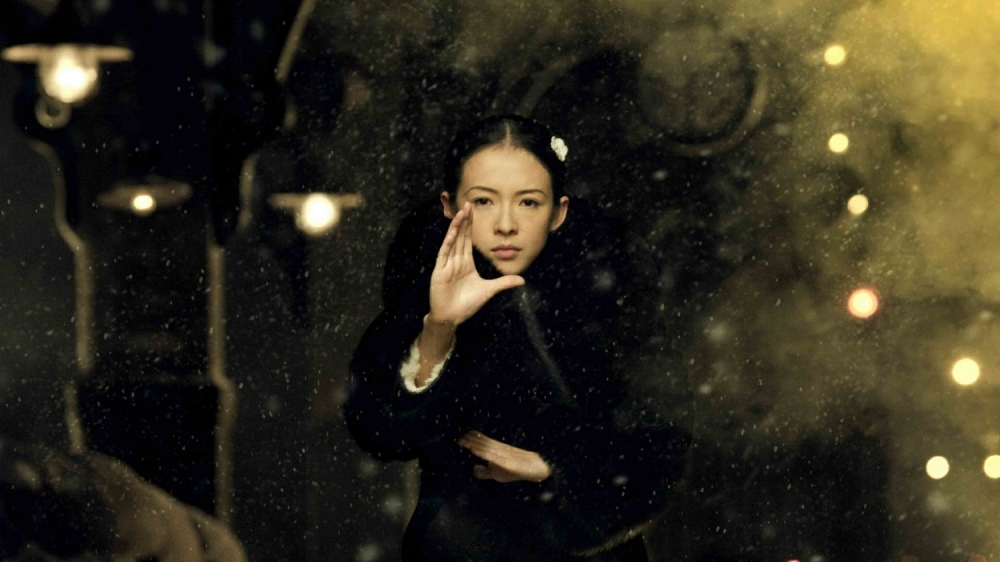
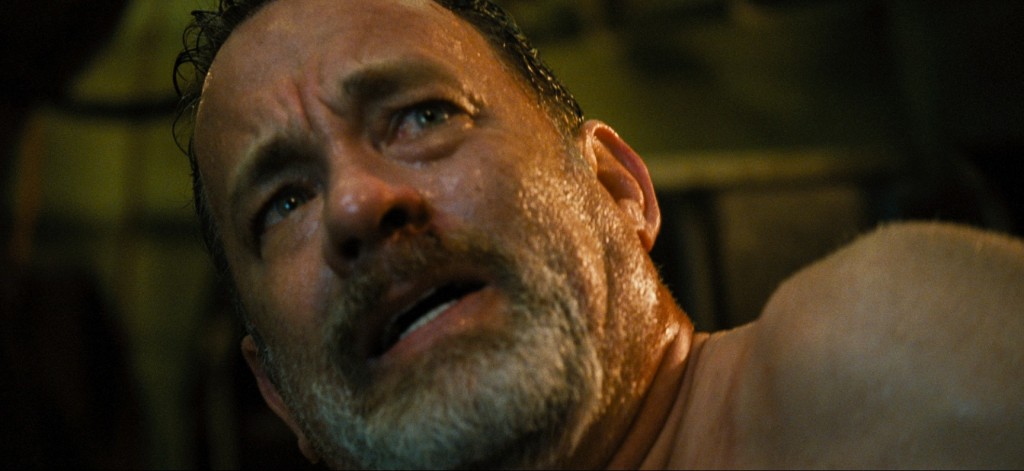
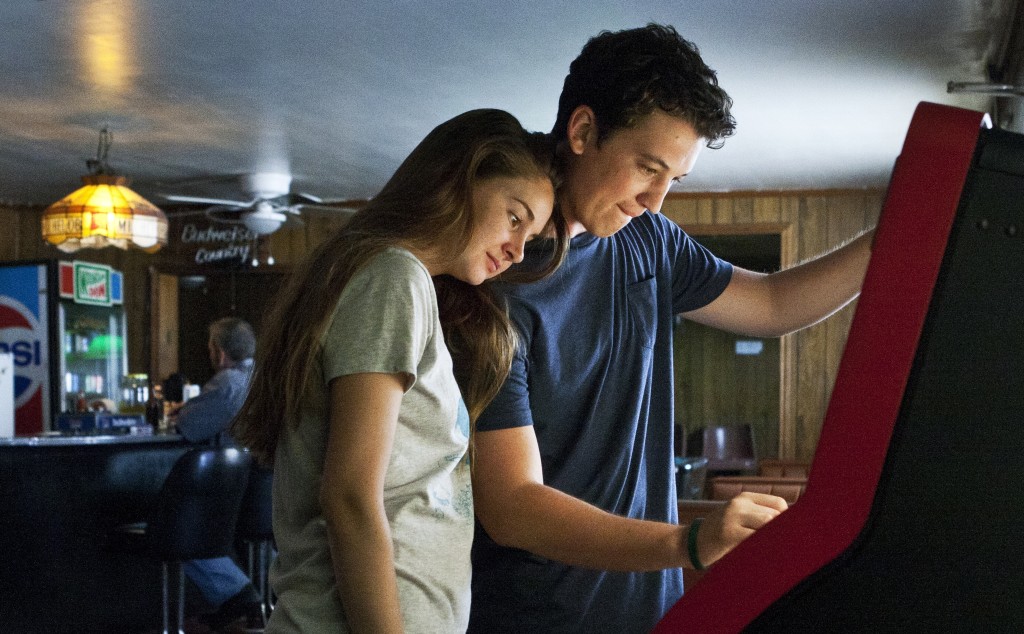
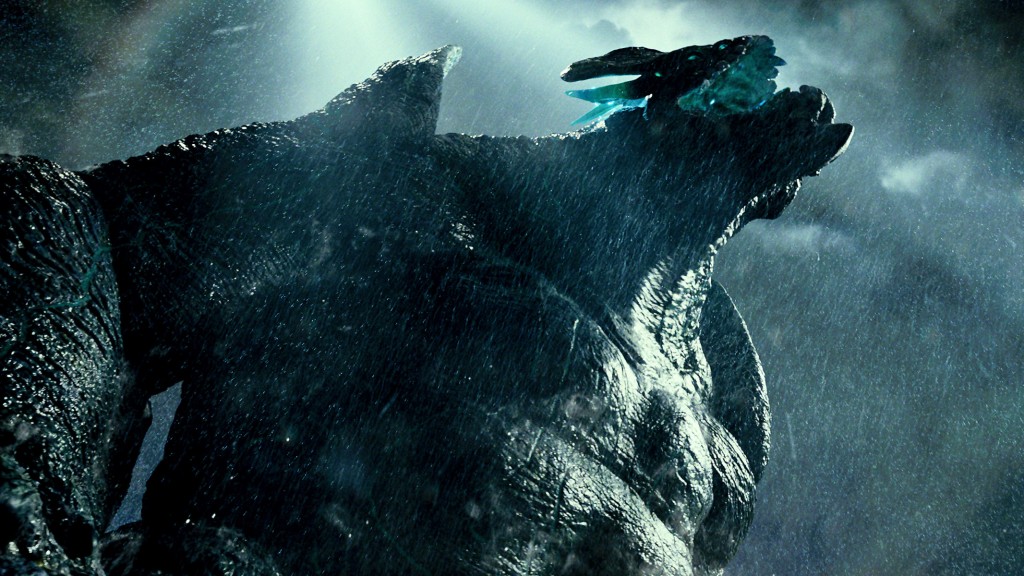
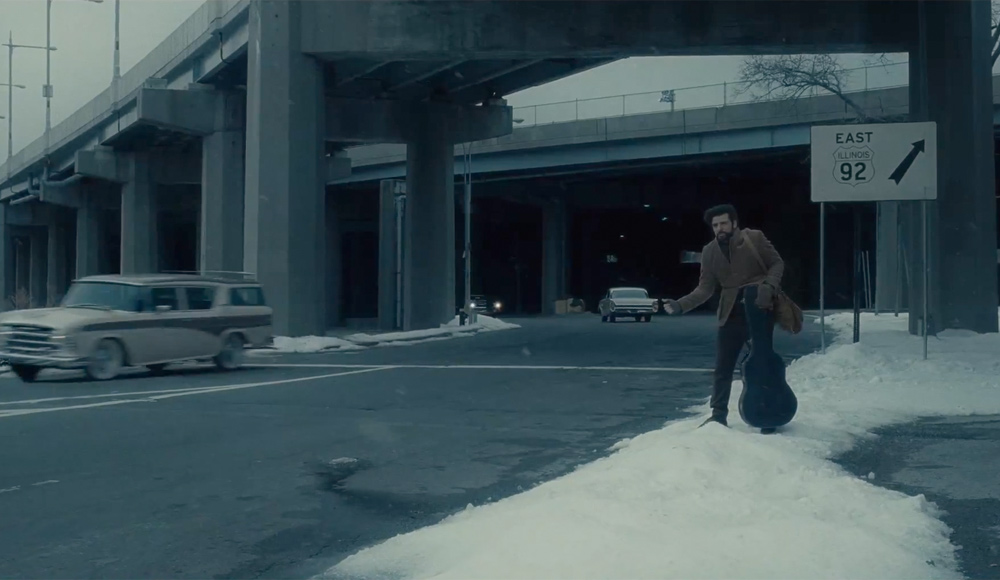
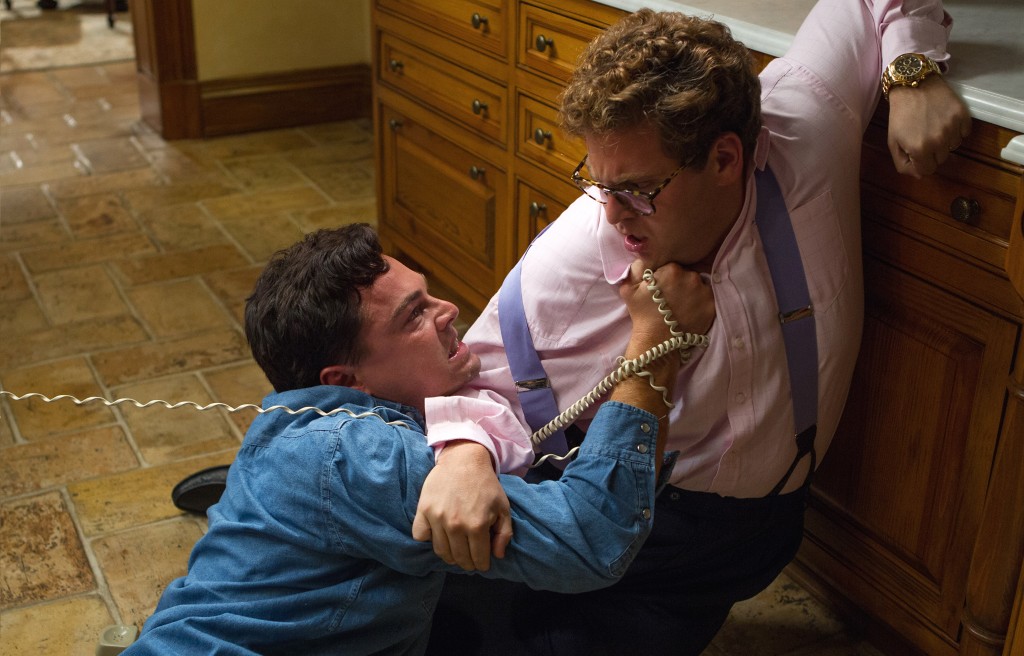
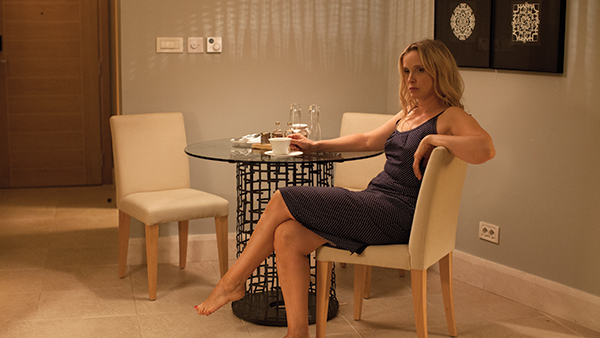
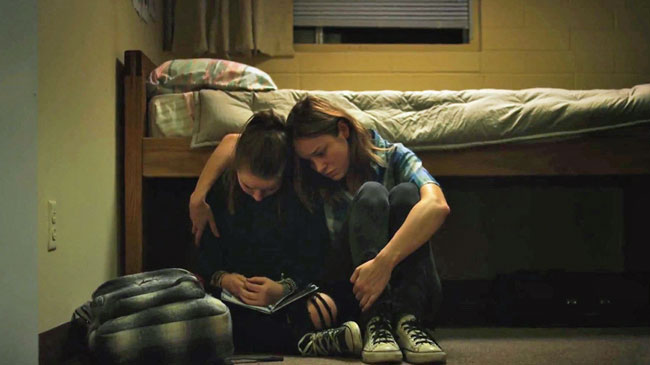
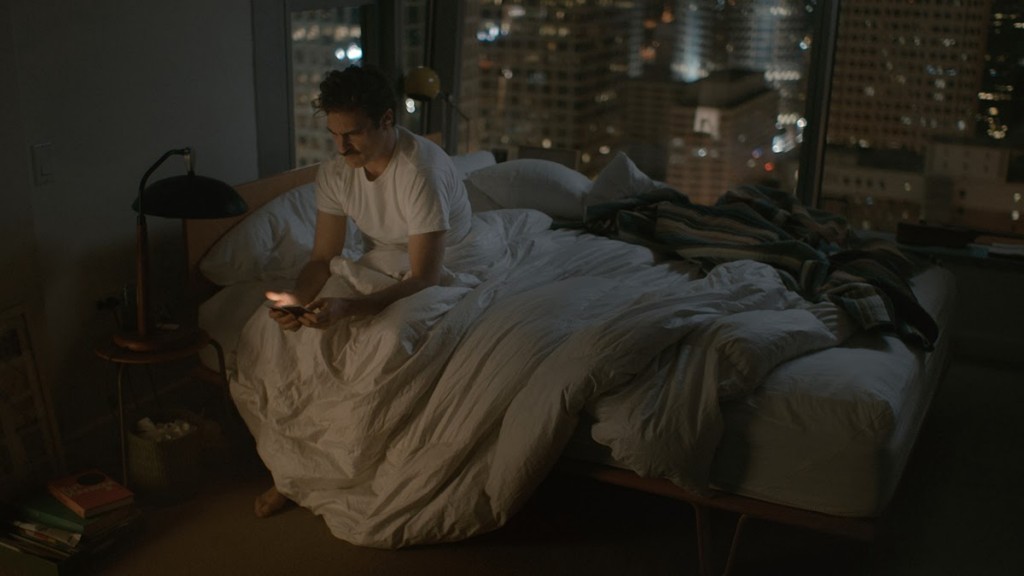
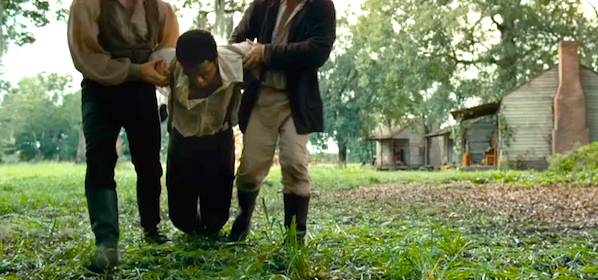
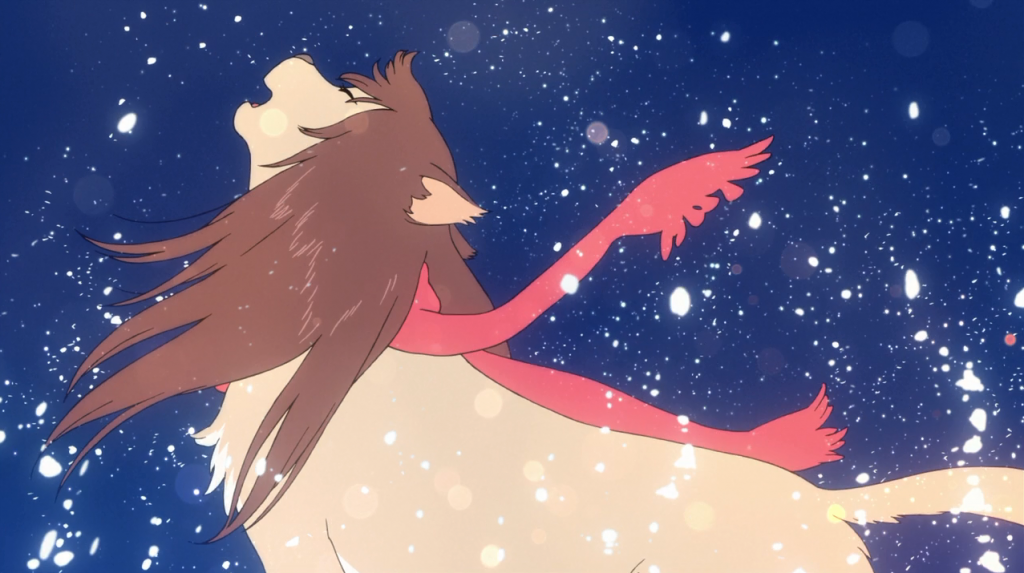
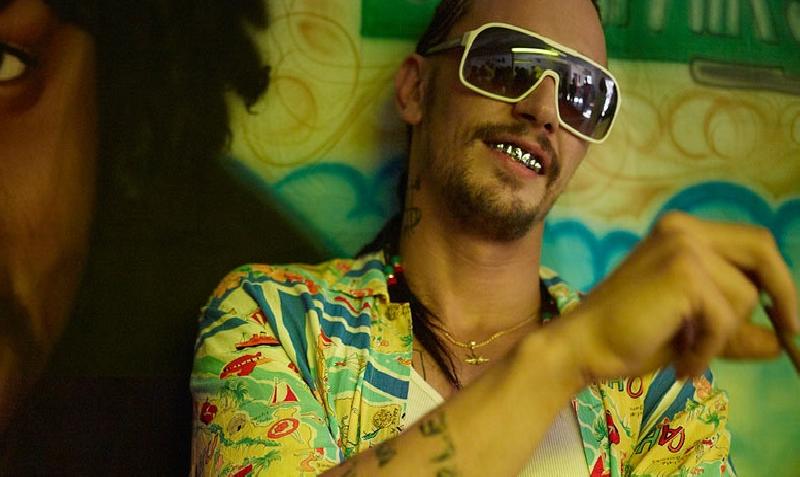
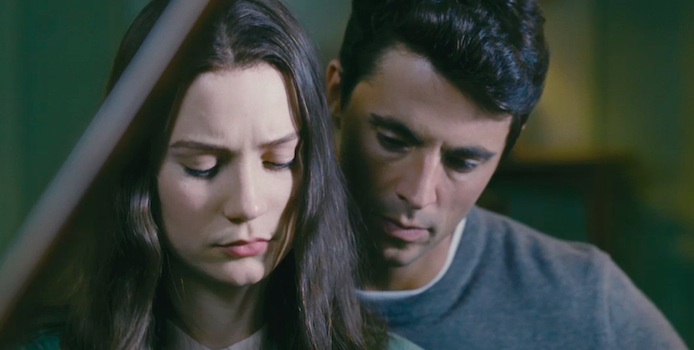
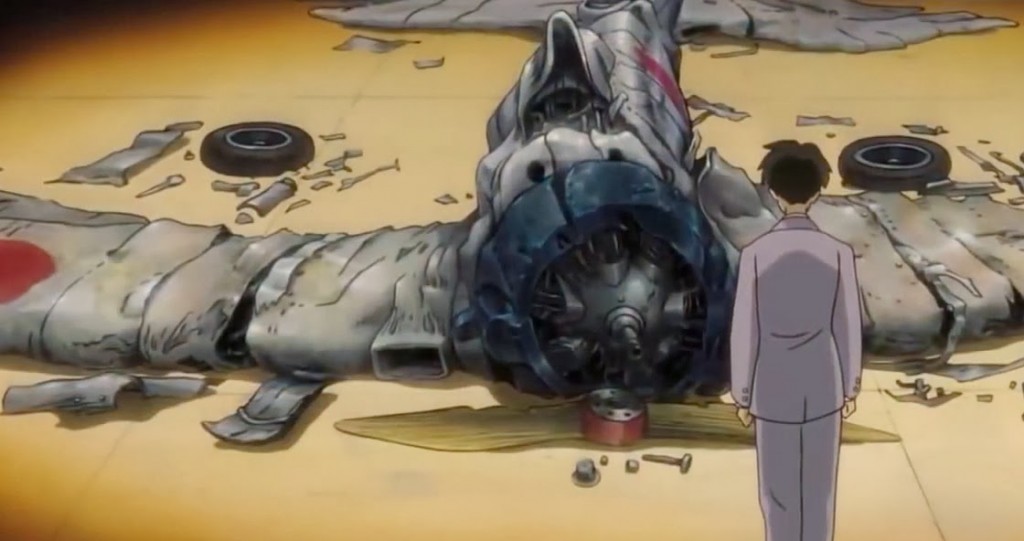
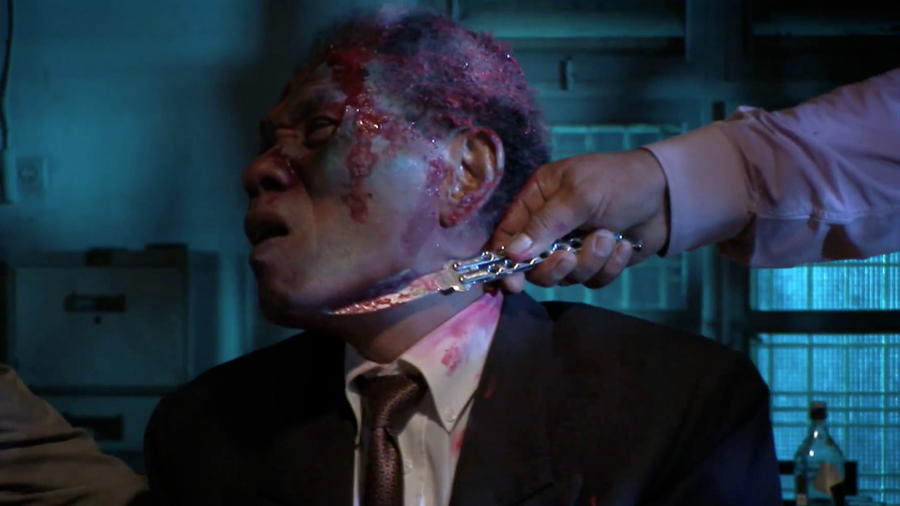
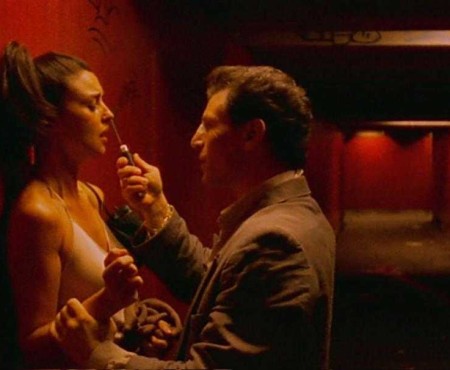
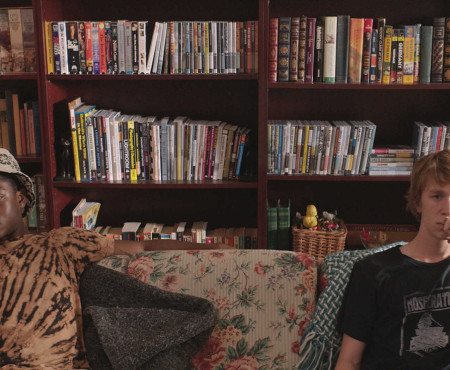
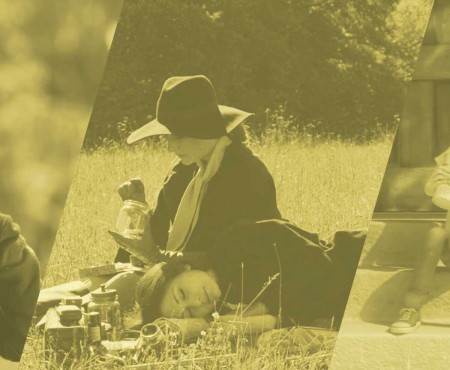
One thought on “The 20 Best Scenes of 2013”
Pingback: Nighttalking. – -Luminosity-